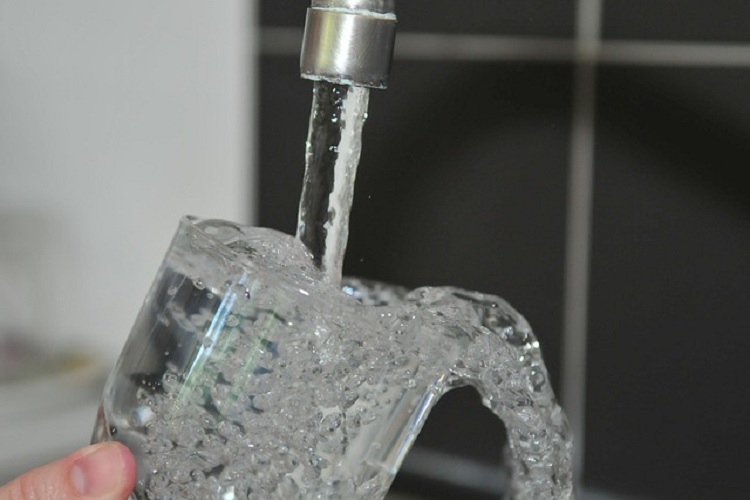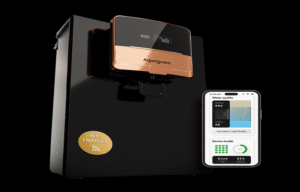How to Install a Water Softener System in Your Home

Being stuck in a place with hard water is one of the worst things you may experience. If you don’t have that problem, lucky you. You probably live in the north or west, where the water is nice and soft. For you, hard water may sound like a dumb joke. How can water be hard when it’s liquid? Well, for those living in the south and east of England, that’s a huge problem.
Hard water contains a high amount of dissolved minerals, primarily calcium and magnesium. These minerals are naturally present in the earth’s crust and can dissolve into the water as it comes into contact with rocks, soil, and underground aquifers.
So, installing a water softener system is an effective solution to resolve this issue and improve the quality of your water. To help you in this endeavour, we prepared a step-by-step guide for installing a water softener system in your home.
What’s the problem
Hard water is a real pain in the rear, as it causes significant damage to your water system and your appliances.
If left unchecked, hard water can lead to costly repairs and a lot of nerves over something that can be fixed in a matter of hours. Among the many issues with hard water, probably the most irritating is the Limescale buildup.
Hard water contains high levels of minerals, particularly calcium and magnesium. Over time, these minerals can accumulate and form limescale deposits in pipes, faucets, showerheads, and appliances like kettles and washing machines. Limescale can restrict water flow, reduce appliance efficiency, and even cause blockages if left untreated.
Moreover, hard water will significantly reduce the efficiency of cleaning products. Hard water reacts with soap and detergents, forming a scum or residue.
This scum makes it difficult for soap to lather effectively, reducing cleaning efficiency. It can also leave a film or spots on dishes, glassware, and bathroom fixtures. It’s similar to laundry.
Hard water can affect the effectiveness of laundry detergents. The minerals in hard water can bind to the detergent, making it less effective in removing dirt and stains from clothes. This can result in stiff, dull, and less vibrant laundry.
Worst of all, however, is the itching. The mineral content in hard H2O can remove the natural oils from the skin. This will result in it becoming dry, tight, and potentially itchy. Hard water can also exacerbate skin conditions like eczema.
The most costly of these issues, without a doubt, is if the hard water clogs your plumbing systems. Over time, limescale deposits can accumulate in pipes, reducing their diameter and causing clogs. This can lead to decreased water pressure and potentially expensive plumbing repairs.
When Does Hard Water Require Softening
Hard water may require softening when the mineral content, particularly calcium and magnesium, is high.
The hardness of water is typically measured in:
- parts per million (ppm);
- grains per gallon (gpg) of calcium carbonate (CaCO3) or its equivalent.
While the specific thresholds for determining when water needs softening may vary, there are some general guidelines it’s good to know.
When we talk about soft water, it usually has 0-60 PPM. Water in this range is considered soft and generally does not require softening. It contains minimal levels of dissolved minerals and is unlikely to cause significant issues. Usually, people living in the northern and western parts of Great Britain enjoy such good quality water.
Water containing 61-120 PPM is commonly considered mildly hard. It may start causing mild problems such as reduced soap lathering, mineral buildup on fixtures, and dulling of clothes. Softening is not mandatory but could be beneficial for certain applications.
Typically Hard Water, as we know it, contains between 121-180 PPM and may cause noticeable issues. Limescale buildup in appliances and pipes can become more significant, affecting their efficiency and lifespan. Softening is often recommended to address these problems.
Finally, you have Very Hard Water when the levels go above 180 PPM. This water is likely to cause significant problems, including severe limescale buildup, reduced effectiveness of cleaning agents, and increased wear and tear on appliances. Softening is generally necessary to mitigate these issues.
It’s important to note that the specific impact of hard water can vary depending on other factors, such as pH levels and the presence of additional minerals.
If you are experiencing issues related to hard water, an experienced plumber should conduct a water hardness test to determine the appropriate course of action. Only after you are certain that hard water is the problem can you take it upon yourself to install a water softener.
The Tools You’ll Need
Just like with any other DIY project, you will need a set of tools to complete it. High-quality ones are preferable, as low-quality toolsets can often damage the softener and render it useless.
So, before you start messing with your plumbing system, make sure you have the following tools:
- Adjustable wrench
- Channel-lock pliers
- Hacksaw (if needed)
- Propane torch (if needed)
- Screwdriver
- Plumbing pipe fittings (as needed)
- Flexible supply tubes
- Solder and flux (if needed)
- 1/2-inch diameter flexible drain tubing
- Pipe clamps
- Air gap fitting (if needed)
How to Install a Water Softener
Now that your tools are ready let’s dive right into installing your water softener system. But before you start touching your plumbing, first things first.
Turn off the Water Supply
If you plan on staying relatively dry and not making a fresh new swimming pool in your basement, turning off the water should be your first and most important task. So, locate the main water shut-off valve and turn it off. You’re halfway there if you think that’s enough to prevent your home from flooding.
Drain the Faucets
Once you’ve shut off the water supply, it’s time to drain the remaining water in the system. All you need to do is open the faucets; any water stuck in your pipes will instantly float away.
Position the Water Softener
Find a suitable location for the water softener system. It should be positioned close to the entry point of the water into your home. Avoid placing it downstream from the water heater to prevent damage. Ensure there is access to an electrical outlet and a drain for water discharge.
Connect to the Water Supply Line
Connect the water softener system using flexible supply tubes to the water supply line. To install the flex tube fittings, you must cut out a section of the water supply line. Connect the supply-side pipe to the inlet port on the water softener and the house-side pipe to the outlet port. Tighten the fittings securely.
Connect the Tanks
If your water softener system has separate tanks, connect the brine and mineral tank using the provided tubing. Secure the tubes with hose clamps to ensure a tight connection.
Connect the Drain Tubing
Most water softeners require two drain tubes—one for the control valve and one for the brine tank. Connect the 1/2-inch flexible drain tubing to the appropriate drain elbows on the water softener system. Run the tubes to a drain location, ensuring they are not connected together and following local regulations regarding the use of air gap fittings if necessary.
Turn on the Water Supply
With all the connections, slowly turn on the main water supply to fill the system. Open a cold water tap in your home to allow air to escape. Check for any leaks and make necessary adjustments.
Test the System
Follow the manufacturer’s instructions to start the water softener system. Set the time of day and water hardness level. Add the recommended type and program the water softener unit.
This may include inputting the water hardness level, adjusting regeneration settings, and configuring any additional features.
Initiate a regeneration cycle on the water softener as per the manufacturer’s recommendations. This helps to flush out any initial impurities and prepare the system for normal operation.
Finally, regularly check the water softener for salt levels in the brine tank and refill it as needed. Follow the manufacturer’s guidelines for maintenance tasks such as cleaning the resin bed, replacing filters, and servicing the unit.
It’s not hard, but it’s not easy
Working on your plumbing system is anything but easy. Following our step-by-step guide will give you a significant boost, but still, be sure you know what you’re doing. Playing with your plumbing may end up very badly if you don’t do it properly.
If you are in doubt, it’s best to call a professional plumber to do the job for you. There’s no shame in asking for help, and it’s certainly better and more affordable than flooding your home.






